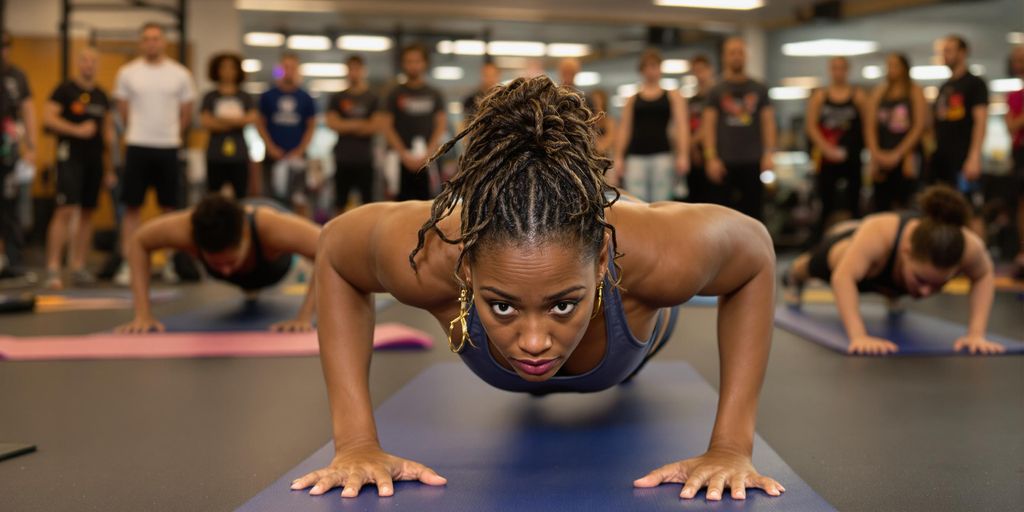The Army Combat Fitness Test (ACFT) marks a significant departure from traditional military fitness assessments. Unlike its predecessors, which often focused on basic calisthenics and running, the ACFT is engineered to simulate the physical demands of modern combat scenarios. This new test evaluates a soldier’s strength, power, endurance, and agility through six rigorous events, offering a more comprehensive measure of combat readiness. It’s a shift from the old way of doing things, designed to better prepare soldiers for the challenges they face in today’s operational environment.
Key Takeaways
- Understand each event of the Army Combat Fitness Test and its scoring.
- Create a balanced training plan that focuses on strength and endurance.
- Nutrition is key—focus on proteins, carbs, and hydration for peak performance.
- Mental toughness is just as important as physical readiness; visualize success.
- Avoid common training mistakes like neglecting recovery and overtraining.
Understanding The Army Combat Fitness Test Components
Overview of Test Events
Okay, so the Army Combat Fitness Test, or ACFT is designed to measure a soldier’s physical readiness for the demands of modern combat. It’s not just about push-ups and running anymore. We’re talking about a six-event gauntlet that really pushes you. The new ACFT includes the following events:
- Maximum Deadlift (MDL)
- Standing Power Throw (SPT)
- Hand-Release Push-Up (HRP)
- Sprint-Drag-Carry (SDC)
- Plank (PLK)
- Two-Mile Run (2MR)
Each event is designed to assess different aspects of physical fitness, like muscular strength, power, endurance, and cardiovascular fitness. It’s a full-body challenge, and you need to train accordingly. The Army used relatively basic tests before, but this is a big step up.
Scoring Criteria
Each event in the ACFT is scored individually, and your overall score is the sum of your scores in each event. There are different scoring scales based on age and gender, which is pretty standard. The maximum score you can get on each event is 100 points, so the maximum total score is 600. But here’s the thing: the Army has set minimum standards that you need to meet to pass the test. For soldiers in combat roles, they need to score at least 60 points in each event and a total of 350 points overall. This is to enhance readiness and lethality among troops. If you fail to meet the minimum standards in any one event, you fail the entire test.
Importance of Each Component
Each event in the ACFT serves a specific purpose in assessing a soldier’s physical capabilities. The Maximum Deadlift measures lower body strength, which is essential for lifting heavy objects and carrying equipment. The Standing Power Throw assesses upper body power and coordination, important for throwing grenades or moving obstacles. Hand-Release Push-Ups test upper body endurance and core stability. The Sprint-Drag-Carry evaluates anaerobic endurance, muscular strength, and agility, simulating battlefield tasks. The Plank measures core strength and stability, crucial for preventing injuries and maintaining posture under load. Finally, the Two-Mile Run assesses cardiovascular endurance, which is vital for sustained physical activity. Basically, each event targets key muscle groups. The ACFT is designed to ensure soldiers are truly battle-ready, and that means your training needs to be top-notch.
Developing A Training Regimen For Success
Creating A Balanced Workout Plan
Okay, so you want to crush the ACFT? It’s not just about lifting heavy or running fast; it’s about a balanced approach. Think of your body as a machine, and each event in the ACFT tests a different part of that machine. You can’t just focus on one area and expect to ace the whole thing. You need a plan that hits everything.
- Assess Your Weaknesses: Take the test! Seriously, do it. Find out where you’re struggling. Is it the deadlift? The sprint-drag-carry? Knowing your weaknesses is the first step.
- Prioritize Compound Movements: These are your bread and butter. Squats, deadlifts, presses – they work multiple muscle groups at once, giving you the most bang for your buck.
- Incorporate Variety: Don’t just do the same exercises every day. Mix it up to keep your body guessing and prevent plateaus. Think about adding power-focused workouts to your routine.
Incorporating Strength and Endurance Training
Strength and endurance are two sides of the same coin when it comes to the ACFT. You need both to perform well. It’s not enough to be able to lift a lot of weight if you gas out halfway through the sprint-drag-carry. And you can’t just run forever if you don’t have the strength to power through the deadlift.
- Strength Training: Focus on lifting heavy (but with good form!). Aim for 3-5 sets of 5-8 reps for your main lifts. Don’t neglect accessory exercises like pull-ups, rows, and lunges.
- Endurance Training: Mix it up with long, slow distance runs and high-intensity interval training (HIIT). HIIT is great for improving your cardiovascular fitness and your ability to recover quickly between events.
- Combine Strength and Endurance: Consider circuit training, where you alternate between strength exercises and cardio exercises with minimal rest. This will help you build both strength and endurance at the same time.
Monitoring Progress and Adjustments
Training isn’t a set-it-and-forget-it kind of thing. You need to track your progress and make adjustments as needed. If you’re not seeing results, something needs to change. Maybe you need to increase the weight you’re lifting, or maybe you need to add more variety to your workouts.
- Keep a Training Log: Write down everything you do in your workouts, including the exercises, sets, reps, and weight. This will help you track your progress over time.
- Track Your ACFT Scores: Take the ACFT regularly to see how you’re improving. This will give you a good idea of whether your training is working.
- Listen to Your Body: Don’t push yourself too hard, especially when you’re first starting out. Rest and recovery are just as important as training. If you’re feeling pain, stop and rest. Don’t try to push through it. Remember to embrace a growth mindset and strive for continuous improvement.
Nutritional Strategies To Enhance Performance
Key Nutrients For Optimal Performance
What you eat can really change how well you do on the ACFT. Focusing on the right foods helps your muscles recover and keeps your energy up. Think of it like this: protein helps rebuild muscle, complex carbs give you lasting energy, and healthy fats are important for overall health. It’s like fueling up for a mission; you need the right stuff to keep going.
Also, don’t forget about vitamins and minerals. Iron helps carry oxygen in your blood, and vitamin D keeps your bones strong. These small things make a big difference.
Meal Planning For Training Days
When you eat matters just as much as what you eat. Eating before a workout should be about getting energy that lasts. Think lean protein and complex carbs. After a workout, you need to help your muscles recover, so go for nutrient-rich foods.
Snacks are also important. They keep your blood sugar steady, so you don’t run out of energy during the day. Planning your meals helps keep your metabolism in check and helps your body recover, which is super important when you’re training hard.
Hydration Guidelines
Staying hydrated is a big deal for doing well on the ACFT. Make sure you’re drinking enough water, especially when you’re training hard. Water keeps your muscles working right and helps you react quickly, both of which are important for the test.
Drink water before, during, and after workouts to avoid getting dehydrated. Dehydration can mess with your physical abilities and make it harder to do your best.
Mental Preparation For The Army Combat Fitness Test
Building Mental Toughness
Okay, so you’ve been hitting the gym, eating right, and your body is (hopefully) ready for the ACFT. But what about your mind? That’s just as important, maybe even more so. Mental toughness is what separates those who just pass from those who crush it. Think of it like this: your body is the weapon, but your mind is the one pulling the trigger. You need to train your brain just like you train your muscles.
- Set Realistic Goals: Don’t aim for the impossible right away. Start with achievable targets and gradually increase the difficulty. This builds confidence and prevents discouragement.
- Embrace Discomfort: The ACFT is designed to be challenging. Learn to push through the pain and discomfort. Remind yourself why you’re doing this and focus on the end goal.
- Develop a Routine: Establish a pre-test routine that helps you get in the zone. This could include listening to music, doing some light stretching, or practicing mindfulness exercises.
Visualization Techniques
Visualization is a powerful tool that can help you improve your performance on the ACFT. It involves creating a mental image of yourself successfully completing each event. The more vivid and detailed your visualization, the more effective it will be. It’s like watching a movie in your head where you’re the star, acing every single event.
- Detailed Imagery: Imagine every aspect of the test, from the starting line to the finish line. Feel the weight of the equipment, hear the sounds of the test, and see yourself performing flawlessly.
- Positive Self-Talk: Replace negative thoughts with positive affirmations. Tell yourself that you are strong, capable, and prepared to succeed.
- Practice Regularly: The more you visualize, the more natural it will become. Set aside time each day to practice your visualization techniques. This is a great way to build mental stamina.
Embracing A Growth Mindset
A growth mindset is the belief that your abilities and intelligence can be developed through dedication and hard work. This is the opposite of a fixed mindset, which is the belief that your abilities are innate and unchangeable. Embracing a growth mindset can help you overcome challenges, learn from your mistakes, and achieve your full potential on the ACFT. It’s all about believing you can improve, no matter where you’re starting from.
- Focus on Learning: Instead of focusing on your current abilities, focus on what you can learn and improve. View challenges as opportunities for growth.
- Embrace Failure: Don’t be afraid to make mistakes. Failure is a natural part of the learning process. Learn from your mistakes and use them to improve your performance.
- Seek Feedback: Ask for feedback from your trainers, peers, and instructors. Use their feedback to identify areas where you can improve. This is a key part of ACFT preparation.
Test Day Strategies For Optimal Performance
Pre-Test Warm-Up Routines
Okay, so test day is here. Don’t just jump right into it! A proper warm-up is super important. Think of it like this: you wouldn’t start a car in freezing weather and immediately floor it, right? Same idea. Get your blood flowing, loosen up those muscles, and get your mind in the game. A light jog, some dynamic stretching (arm circles, leg swings), and maybe a few practice reps of the exercises will do the trick. Even just a quick jog can make a difference. It’s about getting ready to perform at your best, not just going through the motions.
Managing Test Day Nerves
Let’s be real, everyone gets nervous before a big test. It’s totally normal. The key is to manage those nerves so they don’t mess you up. Deep breathing exercises are your friend. Inhale slowly, exhale slowly. Do that a few times, and you’ll feel a bit calmer. Visualization can also help. Picture yourself crushing each event. See yourself succeeding. If you’re feeling overwhelmed, try to focus on one event at a time. Don’t let the whole test freak you out. Remember all the training you’ve done, and trust that you’re prepared. Some people find that listening to music helps them relax, but make sure it’s allowed during the test.
Pacing Yourself During The Test
Pacing is key, especially for the endurance events. Don’t go all-out right from the start, or you’ll burn out before you finish. Find a pace that you can maintain, and stick to it. It’s better to start a little slower and finish strong than to start fast and crash halfway through. Pay attention to your body. If you’re feeling pain, slow down or stop. Don’t push yourself to the point of injury. Remember, it’s a test of fitness, not a test of how much pain you can endure. And don’t forget to breathe! Proper breathing can make a huge difference in your endurance and overall performance.
Common Mistakes To Avoid During Training
Neglecting Recovery Time
It’s easy to get caught up in pushing yourself harder and harder, but skipping recovery is a recipe for disaster. Think of recovery as part of your training, not something separate. If you’re not sleeping enough, eating right, or taking rest days, your body won’t be able to rebuild and get stronger. This can lead to injuries and burnout. Light jogging or walking can help facilitate the dispersal of lactic acid buildup, reducing muscle soreness and enhancing recovery.
Ignoring Weaknesses
It’s human nature to focus on what you’re good at, but ignoring your weaknesses in ACFT training is a big mistake. The ACFT tests a range of physical abilities, and if you neglect one area, it will drag down your overall score. Take the test, identify any weak areas you may have, and research ways to address your weaknesses. For example, if you struggle with the Standing Power Throw (SPT), dedicate extra time to power-focused workouts like box jumps or Olympic lifts. Don’t avoid what’s hard; attack it head-on.
Overtraining Risks
Overtraining is a common pitfall, especially for those eager to improve quickly. Pushing too hard, too soon, can lead to injuries, fatigue, and decreased performance. It’s about finding the right balance between pushing your limits and allowing your body to recover. Listen to your body; pain is a signal that something is wrong. Make sure you’re incorporating enough rest days into your training schedule and not increasing your training volume or intensity too rapidly. If you struggle to recover from lack of sleep, inadequate nutrition, or insufficient rest between workouts, then you need to ease up at the gym. Overtraining can lead to illness and injury, this is a good time to listen to your body.
Utilizing Resources And Support Systems
Finding A Training Partner
Going it alone can be tough. Having someone to sweat alongside can make a huge difference. A training partner can provide motivation when you’re feeling sluggish, offer a fresh perspective on your form, and just make the whole process more enjoyable. Plus, a little healthy competition never hurt anyone! It’s not just about having someone there; it’s about having someone who understands what you’re going through and can push you to be better.
Accessing Online Resources
The internet is overflowing with information, and that includes resources for acing the Army Combat Fitness Test. You can find everything from sample workout plans to detailed explanations of each event. Just be sure to vet your sources! Look for reputable websites and channels that are run by certified trainers or experienced soldiers. Don’t fall for fad diets or miracle cures. A good place to start is the Army’s official website, which usually has a wealth of information. Fitness apps can also be a great way to track your progress and stay motivated.
Engaging With Fitness Communities
Connecting with others who are also training for the ACFT can be incredibly helpful. Online forums and social media groups can provide a sense of community and support. You can share tips, ask questions, and celebrate each other’s successes. Sometimes, just knowing that you’re not alone in your struggles can make all the difference. Plus, you might pick up some new training techniques or strategies that you hadn’t considered before. It’s a great way to stay motivated and learn from others’ experiences.
Wrapping It Up: Your Path to ACFT Success
So, there you have it. Mastering the Army Combat Fitness Test isn’t just about showing up and hoping for the best. It takes real effort, planning, and a bit of grit. Remember, it’s all about setting clear goals, sticking to a solid training plan, and keeping an eye on your progress. Don’t forget to fuel your body right and stay hydrated. When test day rolls around, approach it with confidence and a positive mindset. You’ve put in the work, so trust in your training. With these tips in your back pocket, you’re ready to tackle the ACFT and come out on top. Good luck out there!
Frequently Asked Questions
What is the Army Combat Fitness Test (ACFT)?
The Army Combat Fitness Test (ACFT) is a fitness assessment designed to measure a soldier’s physical readiness for combat. It includes various exercises that test strength, endurance, and agility.
What are the main events in the ACFT?
The ACFT consists of six events: the deadlift, standing power throw, hand-release push-ups, sprint-drag-carry, plank, and a two-mile run.
How is the ACFT scored?
The ACFT is scored based on the performance in each event, with points awarded for achieving specific standards. The total score determines whether a soldier passes or fails.
How can I prepare for the ACFT?
To prepare for the ACFT, create a balanced training plan that includes strength training, endurance exercises, and practice for each event. Also, focus on proper nutrition and hydration.
What should I eat before taking the ACFT?
Before the ACFT, eat a balanced meal that includes carbohydrates for energy, proteins for muscle recovery, and stay hydrated. Avoid heavy meals right before the test.
What are some common mistakes to avoid when training for the ACFT?
Common mistakes include neglecting recovery time, focusing only on strengths while ignoring weaknesses, and overtraining without proper rest.




